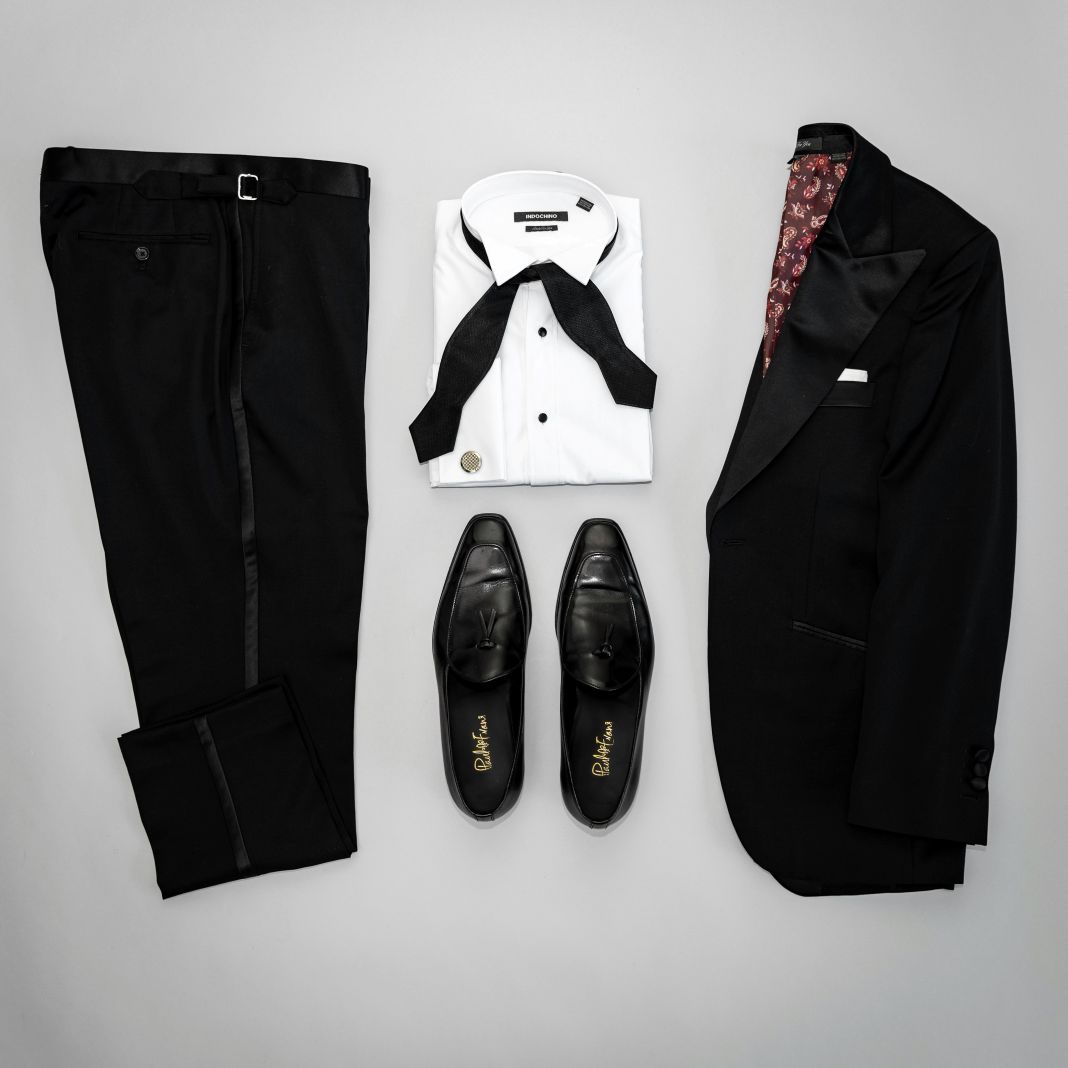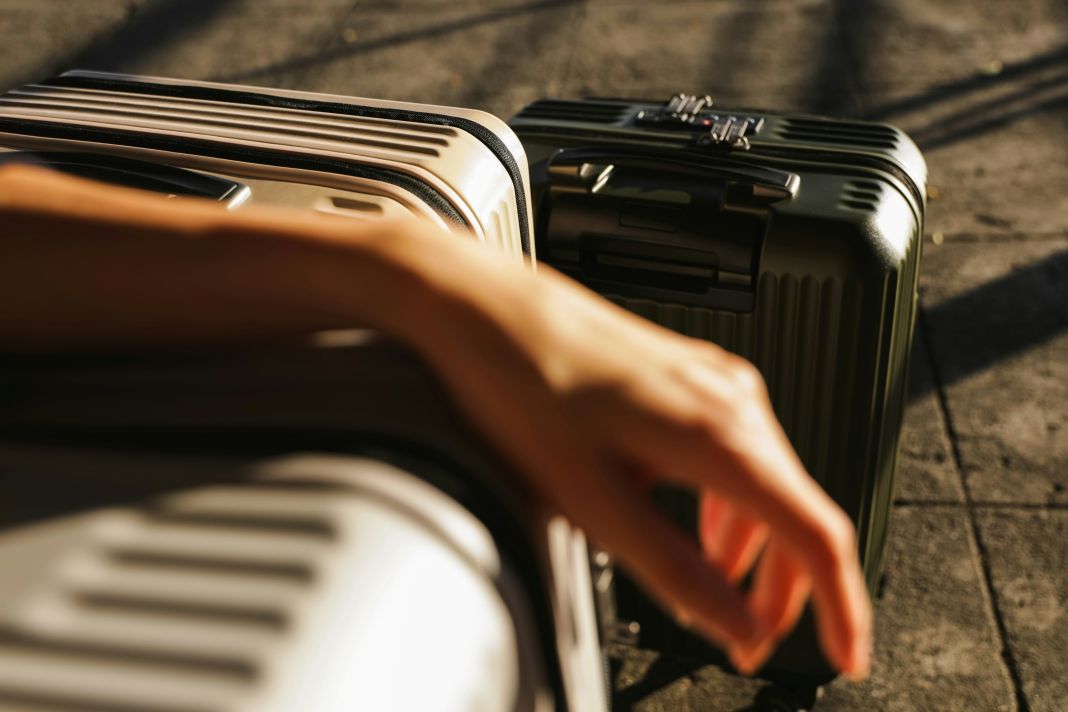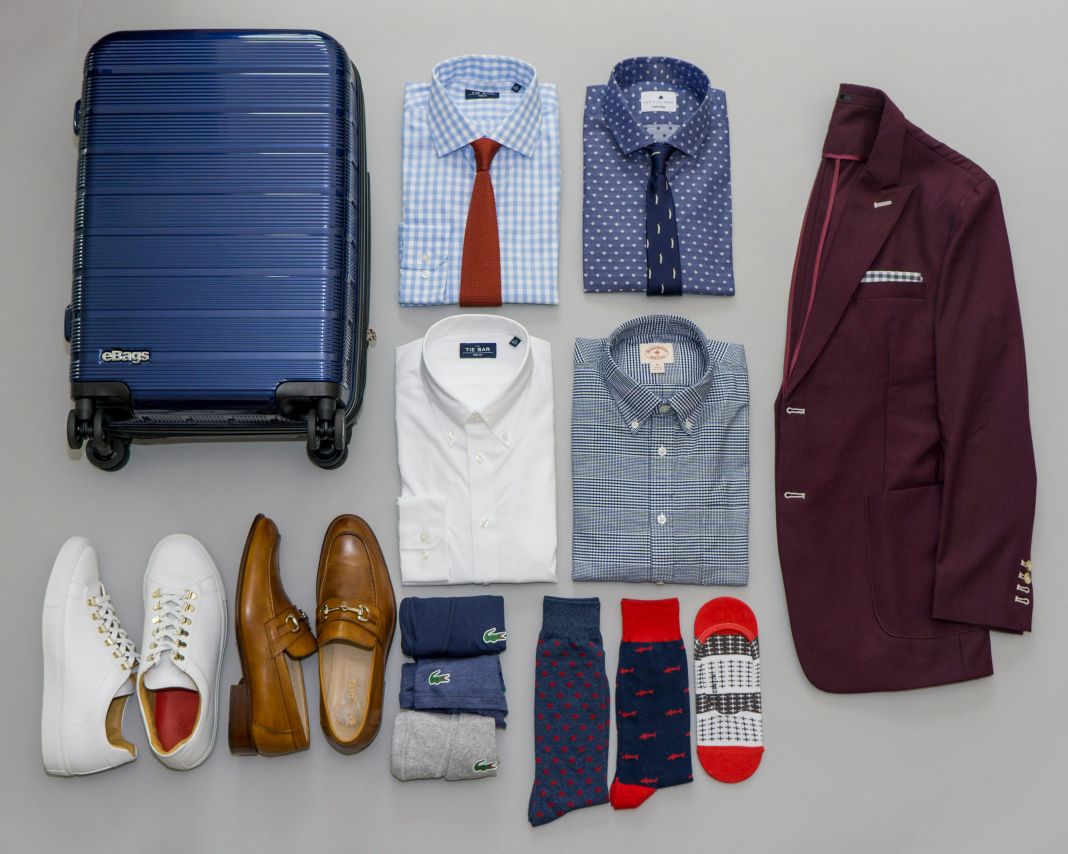Quick Suit Packing Guide
-
Choose a structured suitcase or garment bag
-
Lightly press your suit before packing
-
Use a dry cleaner bag between folds
-
Fold jacket using the inside out shoulder tuck method
-
Follow the natural crease on trousers
-
Place the suit in the middle of your luggage with soft items around it
-
Unpack and hang the suit as soon as you arrive
How do you properly pack a suit for travel without ruining it?
The key to packing a suit properly is protecting its shape, preventing wrinkles and preserving its structure. When you choose the right luggage and follow a reliable folding method, your suit can arrive looking sharp and ready to wear.
Why Proper Packing Protects Your Suit
Creases do more than spoil the look. They can affect the shape and durability of your suit. Pressure, friction and poor folding methods all contribute to long term fabric damage. Bent lapels and flattened shoulders often do not bounce back easily.
It is easy to overlook how much poor packing affects your appearance. But arriving in a wrinkled suit can ruin a first impression. Taking care of your suit while travelling shows respect for both the garment and the occasion.
Suits wrinkle in luggage when they are compressed or folded in ways that put stress on the fabric. Travel adds pressure at seams and high contact areas like lapels and shoulders. A structured jacket is more prone to visible creasing when packed without support. Taking time to protect your suit during travel helps it hold its shape and look more presentable when you arrive.
Some people think wrinkles will fall out on arrival. Others believe any fold will do. Both ideas can lead to lasting damage. A few simple steps keep your suit looking smart from start to finish.
Pro Tip: Never fold a suit against its natural crease. That’s where deep wrinkles start.
Get a Suit That Travels Better
You’ve learned how to pack it. Now wear one built for the journey.
Choose the Right Case and Tools
What you carry your suit in makes a big difference. A garment bag supports it while hanging. A structured suitcase gives space and shape for careful folding.
What is the best luggage option for packing a suit?
-
Garment Bag: Useful for quick business trips or one night stays. The suit stays hanging so folds are less likely.
-
Structured Suitcase: Better for longer journeys. Look for a firm outer shell and interior space that protects garments. If using overhead storage, ensure the case fits without pressure on your folded items.
What accessories help reduce wrinkles in transit?
-
Travel folders: Help hold the shape and stop movement.
-
Dry cleaner bags: Add a smooth layer that reduces friction.
-
Soft padding: Protects vulnerable parts of the suit like lapels and shoulders.
If you travel often for work, invest in a hard sided case that meets carry on limits and has a flat base. Avoid soft holdalls or overpacked bags. These create pressure points that damage the suit’s structure.
Pro Tip: If you can, always unpack and hang your suit within an hour of arriving.
Get Your Suit Ready Before You Fold
Proper packing starts with getting your suit in good shape. A quick press helps settle the fabric. Take out collar stays, cufflinks and anything that could cause marks.
Fasten only the top button of a single breasted jacket. This helps keep its shape without adding strain. Shake the trousers gently once pockets are empty.
Add tissue or soft fabric into the sleeves to help the shoulders hold form. Let the suit hang for a few minutes before folding. Giving it that time helps the material relax.
Even small steps like this go a long way in keeping the structure sound and reducing the chance of wrinkle damage.
How to Fold the Jacket with Care
Most wrinkles come from poor folding. When done properly, the jacket supports itself and holds shape in all the right places.
How do you fold a suit jacket for travel?
- Turn one shoulder inside out.
- Tuck the other shoulder into it.
- Fold the jacket lengthways down the back.
- Place it inside a dry cleaner bag to reduce friction.
This keeps the jacket’s shape and protects the lapel and shoulders while it’s in transit.
What is the alternative method for softer suits?
- Lay the jacket flat
- Fold the sleeves inward
- Roll gently from the bottom upwards
- Place between soft layers or inside a garment sleeve
This works well for jackets made from lighter fabrics with less internal structure.
Expert Tailoring That Moves With You
Designed in London and made for movement. Book your fitting today.
How to Pack the Trousers Properly
Trousers are often the first part of a suit to show creases if folded carelessly.
What is the correct way to fold trousers?
Use the natural crease and fold the trousers in half. If space is tight, fold again at the knee. If your trousers have pleats or thick hems, fold at the waistband to avoid stress on the seams.
Layer the trousers around or beneath the folded jacket. Wrapping them in tissue or a dry cleaning bag can stop them slipping out of place. Wool trousers tend to hold their crease better. Linen or finer cloths need a little more care.
Pack belts or braces separately to avoid indentations.
Smart Placement Inside Your Luggage
Even the best fold won’t help if your suit is crushed under other items. Where you place it in the case matters.
Where should your suit go in the suitcase?
Place it in the middle of your luggage, cushioned by softer items like shirts or jumpers. Keep it away from the sides, wheels or base where weight collects.
Shoes, chargers and heavier items should be kept in separate compartments. Avoid putting anything on top of the suit. If you’re using a soft shell bag, take extra care to pad the sides so the suit does not slump or bend.
Creating a buffer of softer clothes protects the structure and reduces the pressure on key areas.
What to Do When You Arrive
As soon as you can, hang the suit in a well aired space. Most light creases will fall out on their own.
How do you revive a wrinkled suit after travel?
-
Hang it in the bathroom while you shower to release steam
-
Use a handheld steamer if needed
-
Let gravity do the work overnight
-
Brush gently with a suit brush to smooth fibres
When should you avoid steaming?
Avoid using steam on heavy shoulders or delicate fabrics where moisture could cause sagging. If you are unsure, skip the steam and give it more time to hang.
This approach keeps the suit fresh without overhandling. Hotel pressing is fine when the suit really needs it, but avoid sending it for dry cleaning unless necessary.
What to Do If Your Suit Gets Wet in Transit
Rain, spills or condensation can all leave a suit damp. Quick steps can limit damage.
How should you handle a wet suit?
-
Remove it from your bag immediately
-
Blot with a clean towel without rubbing
-
Hang it somewhere dry with good airflow
-
Do not use direct heat to dry it
Let the suit dry naturally. If there are marks after drying, take it to a cleaner who understands suiting fabrics.
Packing Mistakes to Avoid
What should you not do when packing a suit?
Common errors include:
-
Folding against the natural crease
-
Leaving anything in pockets
-
Using soft or overfilled bags
-
Placing shoes or heavy items on top of the suit
-
Forgetting to unpack and hang it at your destination
Check pockets before folding and give the suit space in your case. It makes a difference.
A Final Word on Travelling Well with Style
Packing a suit well is simple when you prepare properly. The right luggage, folding method and placement mean your suit arrives in good condition.
Regular travellers often carry a travel steamer, a spare shirt or crease release spray. These basics help you stay ready for meetings and events.
And remember, a good suit makes travel easier. Suits with structured British tailoring, like those from Fielding & Nicholson Tailoring, keep their shape when handled well. Look after your suit, and it will look after you.







